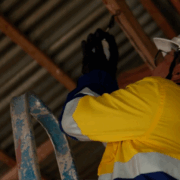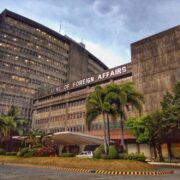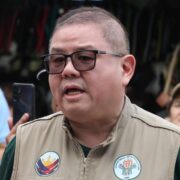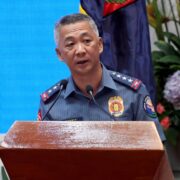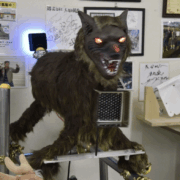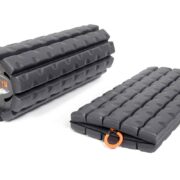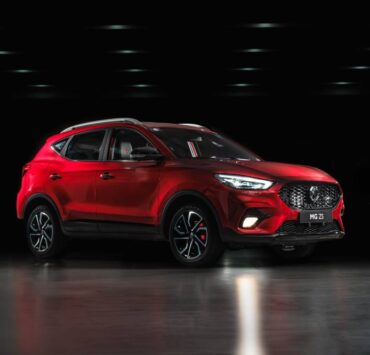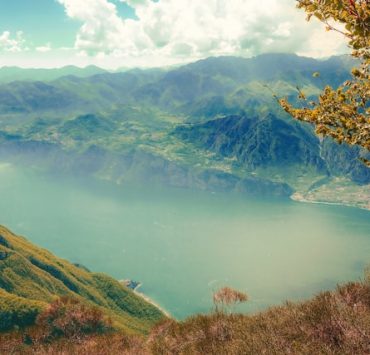Tomas Morato also goes car-free on Sundays
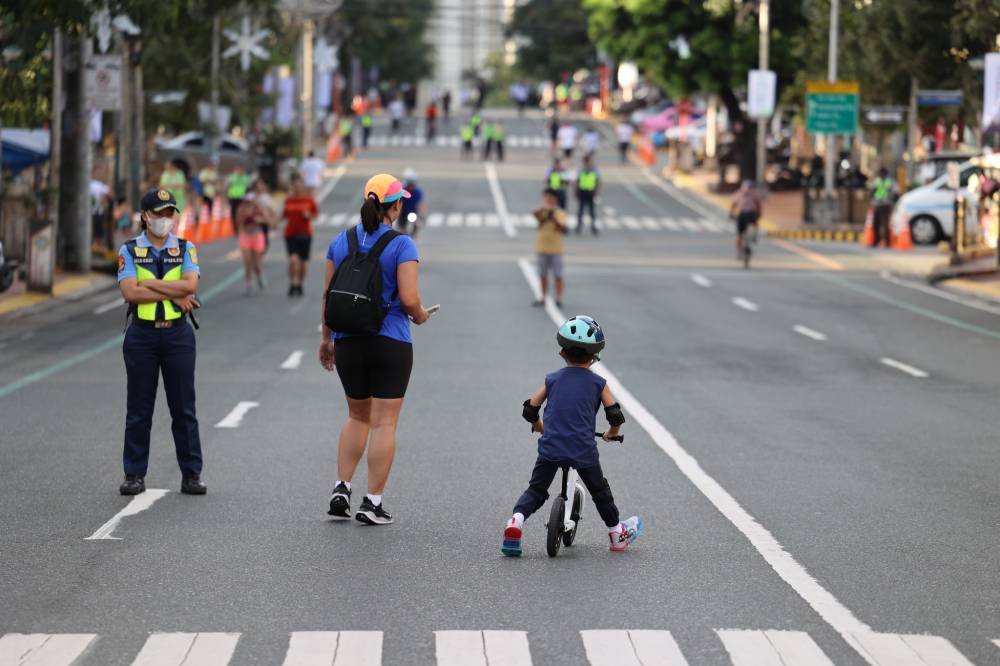
Tomas Morato Avenue is a place one usually goes to end the day. But here I am on a Sunday morning, about to start mine.
It’s 7:30 a.m. The sun is out, the sky a cloudless blue. The revelers that packed the bars and clubs in this popular Quezon City spot last night are already gone. But still, there is loud music blaring—“‘Di Ko Na Mapipigilan” by the SexBomb Girls. Only this time, it’s a flock of bandana-wearing, Good Morning towel-toting Zumba aunties doing the hip-shaking.
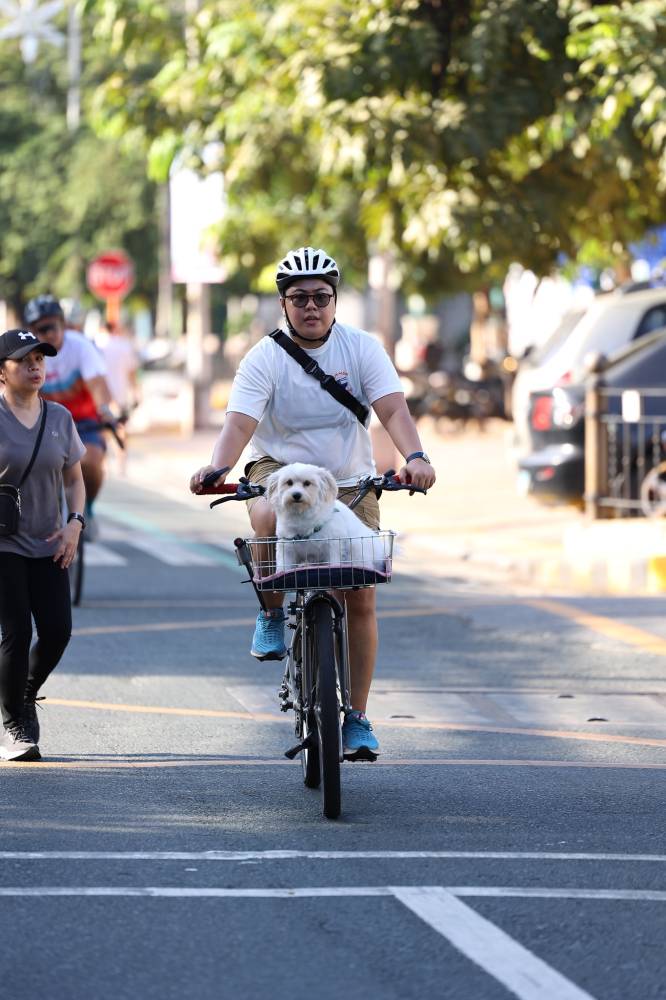
For the next few hours, this street will be their very own dance floor. Following the lead of their instructor onstage, they shimmy in place and wave their arms aloft to the pulsating beats. And true to the infectious disco ditty they’re so eagerly grooving to, nothing is about to stop them.
Because today is a “Car-free, Carefree Sunday” on Morato. Like similar, earlier initiatives on Ayala Avenue in Makati, Roxas Boulevard in Manila, and various cities in Pasig, this project by the QC government hopes to promote healthy lifestyles, active mobility, and environmental sustainability not only among residents of the surrounding neighborhoods, but also visitors simply seeking a change of scenery.
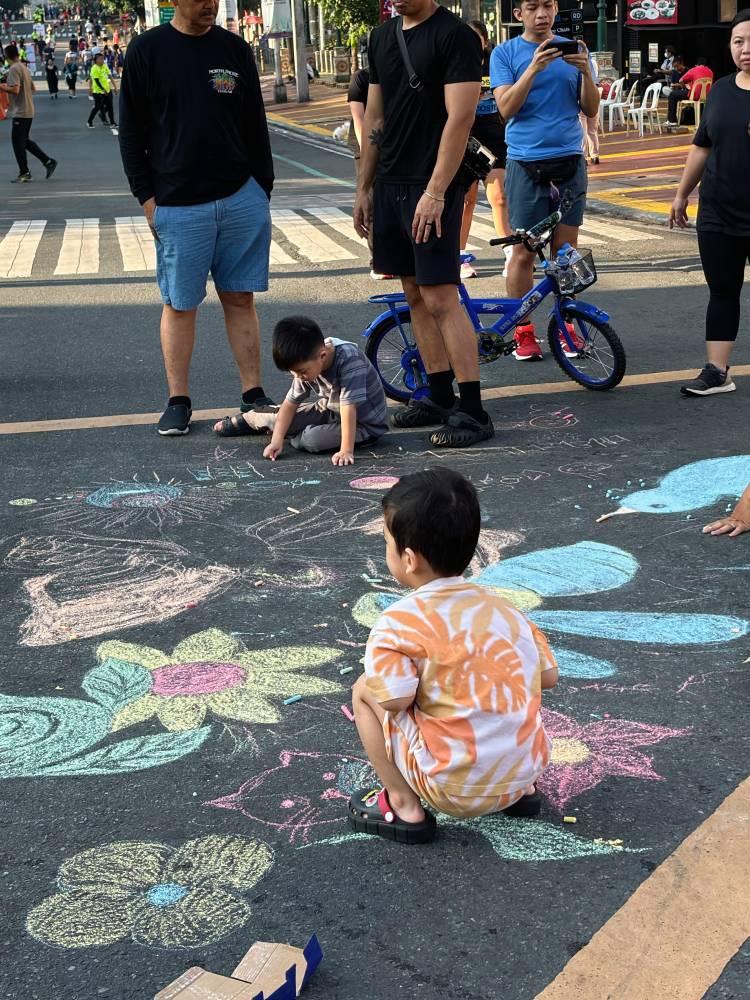
Morning dose of sunshine
From 6 a.m. to 10 a.m., the stretch of Morato from Don Alejandro Roces Avenue to Scout Rallos Street near Timog Avenue gets closed to vehicular traffic, allowing people to engage in physical and other recreational activities on this otherwise chaotic thoroughfare known mainly for its bustling nightlife and resurgent food scene.
On my bike, I pedal along this familiar road, seeing not-so-familiar scenes: a brigade of fellow cyclists regrouping for their next destination, young families walking hand in hand, a mom pushing her newborn in a stroller for a dose of morning sunshine, runners giving you nod as you pass each other, furry friends helping their humans ramp up their daily step count, a delivery app cyclist who can’t resist going for a quick, easy spin before heading out to the obstacle course that is our regular roads.
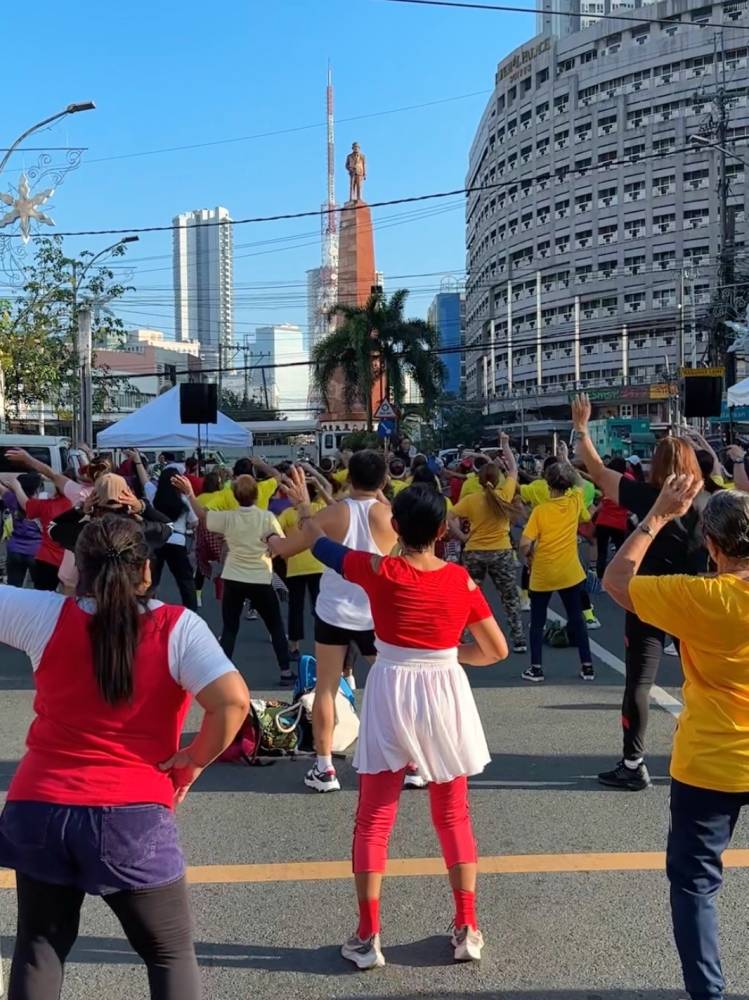
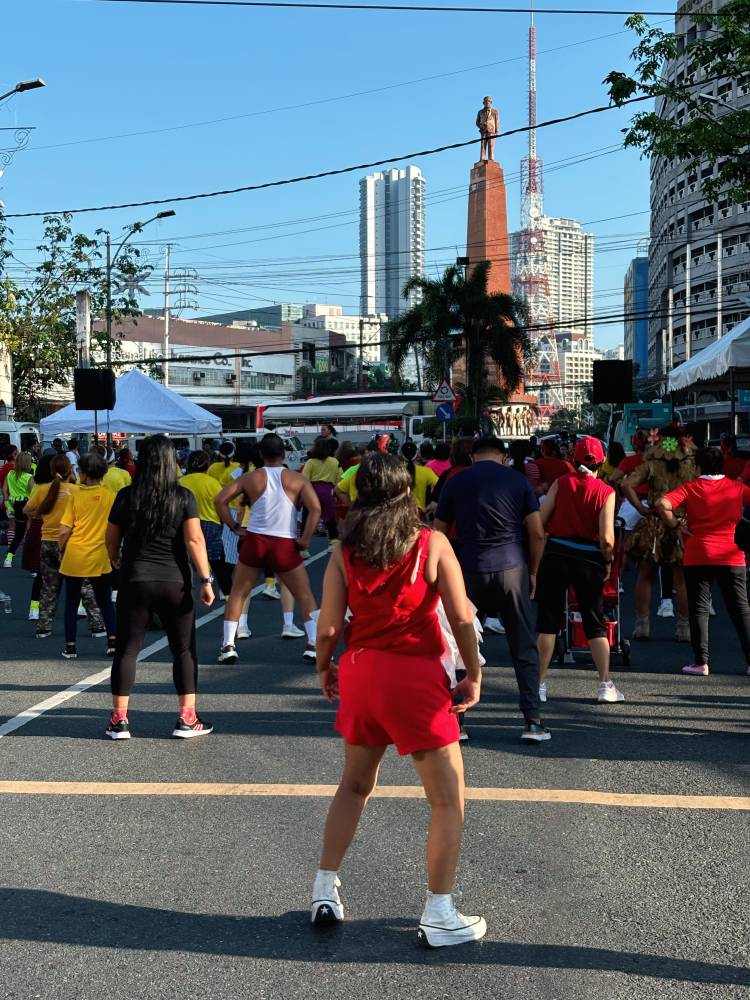
And then there are those who seem happier to enjoy this unusually unhurried morning. On Scout Fernandez, two streets away from a pumped-up cardio session, an elderly man sets up his portable radio and plays a series of standards. On Scout Gandia, the soothing sounds of Chinese bamboo flute accompanies a small group practicing tai chi.
Right across, a group of friends seek shade under a lush sampaloc tree, one of the few remaining along this street, which used to be replete with them, and once bore the name of the evergreen. I ask what they think of this car-free initiative in their area. One of them is happy that she didn’t need to go all the way to UP Diliman to jog; another said it’s a relief because she’s not confident enough to run on busy, potentially dangerous roads.
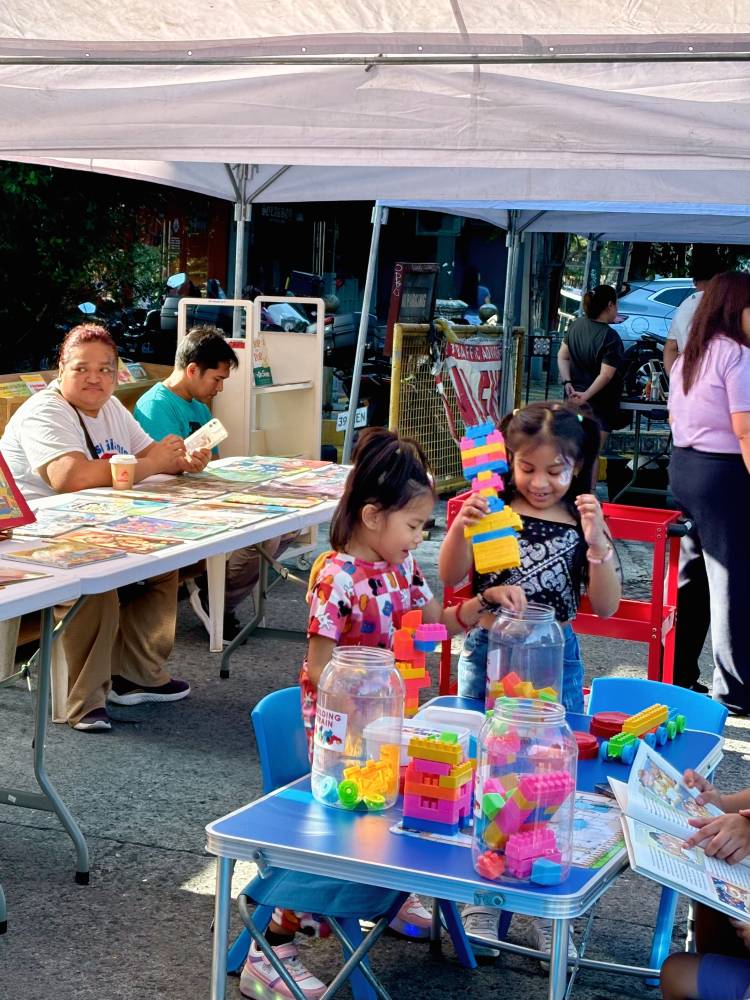
If you want to do some brisk running or cycling, however, you’re probably better off somewhere else more expansive. The four-lane street is quite narrow. And at only 600 m, this car-free stretch is considerably shorter than Ayala Avenue and Roxas Boulevard.
But what it has going for it is its sloping terrain, with climbs and mildly tricky descents—at least for newbies. On our way back, we see a girl holding on to her friend for dear life as they slide down in their roller blades.
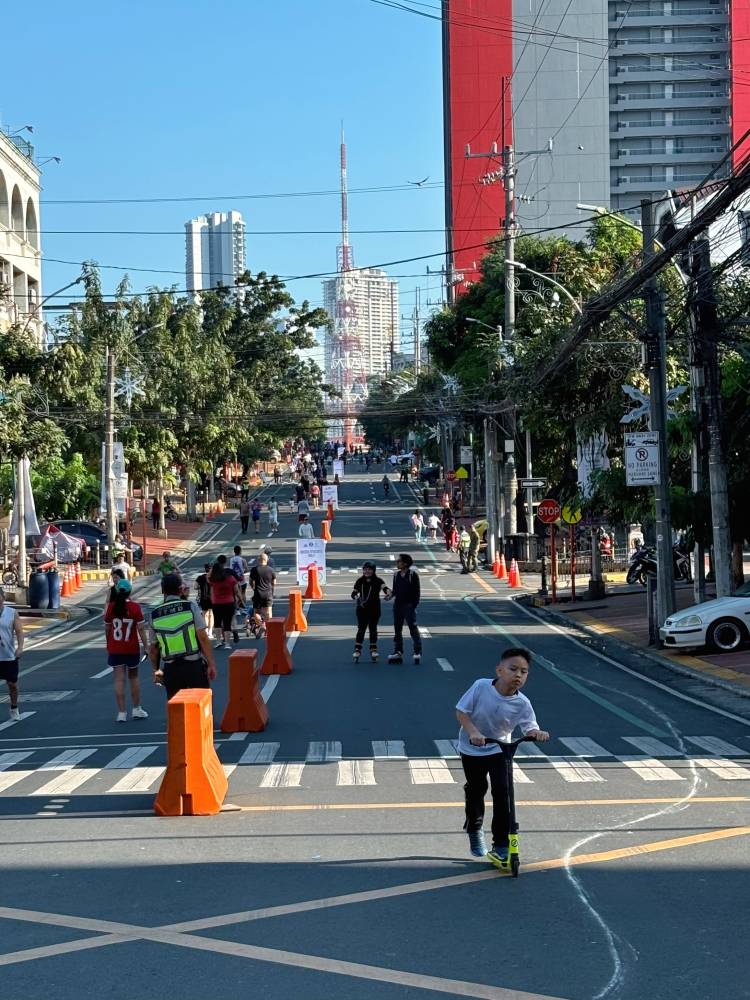
Nice views
And while it doesn’t have Ayala Avenue’s awe-inspiring skyscrapers or Roxas Boulevard’s seaside breeze and proximity to different historical attractions, Morato still has some nice views to offer.
Make the climb toward Roces Avenue (named after National Artist for Literature Alejandro Roces), and in the horizon—right where this street and Timog Avenue intersect via a roundabout—you will see, standing proud atop an obelisk, the statue of his good friend and the man himself, Tomas Morato, the first mayor of Quezon City. Further behind the monument—which also features sculptures of the 24 Boy Scouts who died in a plane crash on their way to Greece for the 11th World Scout Jamboree in 1963 —the ABS-CBN tower, or the Millennium Transmitter, beckons.
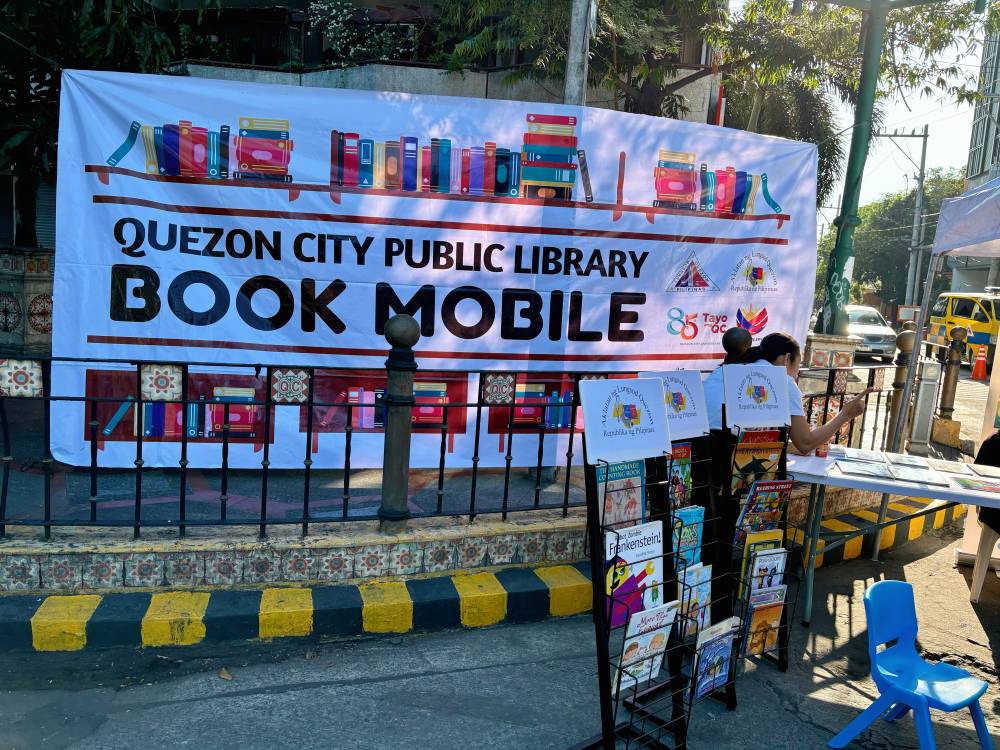
And together with the sight of the almost empty road ahead, they all make for quite a picture.
The real charm of Morato’s car-free Sundays, however, lies in the palpable sense of community on the ground. “Homey” is the word that comes to mind. Everyone seems to know each other. And if they don’t, they have no qualms striking up a conversation, either over a cup of coffee or a bowl of rice and pares on the sidewalk—like neighbors happy to connect for the first time.
The children naturally gravitate to each other. Before long, they’re shrieking, chasing each other on their little bikes with training wheels. Once they grow tired from all the running and pedaling, they turn to their parents and drag them toward the little art nook. There they get their faces painted with colorful designs before heading over to the nearby QC Public Library book mobile, where story books, counting books, and building blocks are available to read and play with.
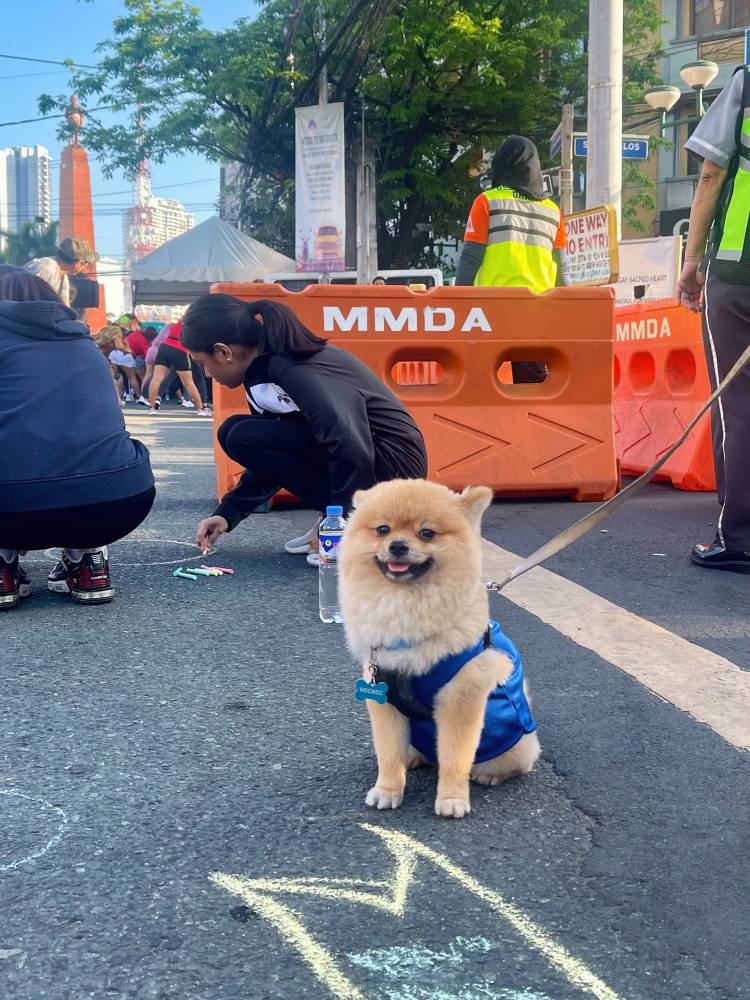
Next to the Zumba area, children get hold of colored chalk, drawing and scribbling on the street—flowers, birds, bees, random strokes and swirls. A curious taho vendor joins the fun. And as it all happens, a Pomeranian looks on as if standing guard.
Every so often, we see people on social media lamenting how children these days are so engrossed with gadgets, that playing outside is all but a thing of the past. To which I find myself thinking and itching to reply: “Well, have you seen the ‘outside’ you speak of?’”
On any given day, “leisurely stroll” is a phrase you wouldn’t exactly use to describe navigating Morato.
The sidewalks are essentially parking spaces. While there’s a footpath for pedestrians, sandwiched in between parked vehicles and storefronts, you will find that it fluctuates in width as you go along. If you’re lucky, it will be blocked by something that has no place being there, like a random motorcycle brazenly left in the middle.
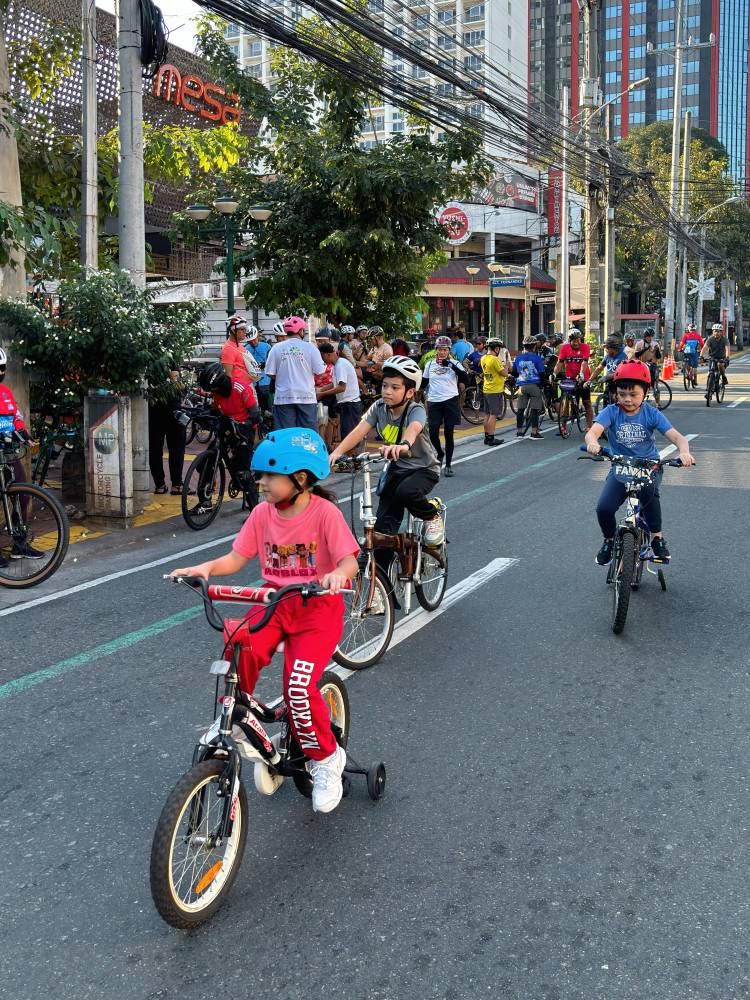
Sense of community
During rush hour or at nightfall, when this place really comes to life, walking in a straight line is not an option. With cars on hazard hogging the curbs, blocking corners and intersections, you will have no choice but to weave in and out of the sidewalk and the road, all the while inhaling toxic fumes. The smaller side streets aren’t that much better, what with vehicles zipping through residential areas with nary a care for speed limits.
But as proven by this car-free event—and other similar projects sprouting across the city—people yearn for safe public spaces; they show that if you provide the space, people will come, sooner or later, one way or another. And where there’s people, a community eventually takes root.
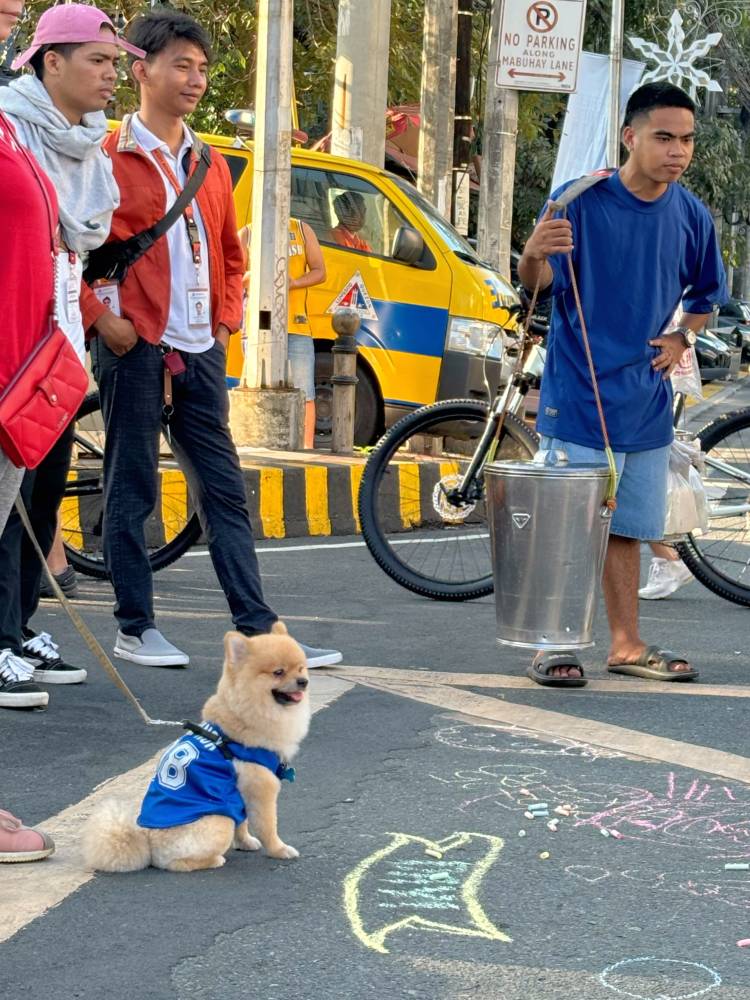
Case in point: This Morato project started last December as a once-a-month event, with the intention of eventually holding it every other Sunday, after a year of implementation. But as it turns out, the event was so enthusiastically received that after just two Sundays (December and January), the QC government announced that it would be holding the event every other Sunday for the months of February and March (Feb. 2 and 16, and March 2, 16 and 30).
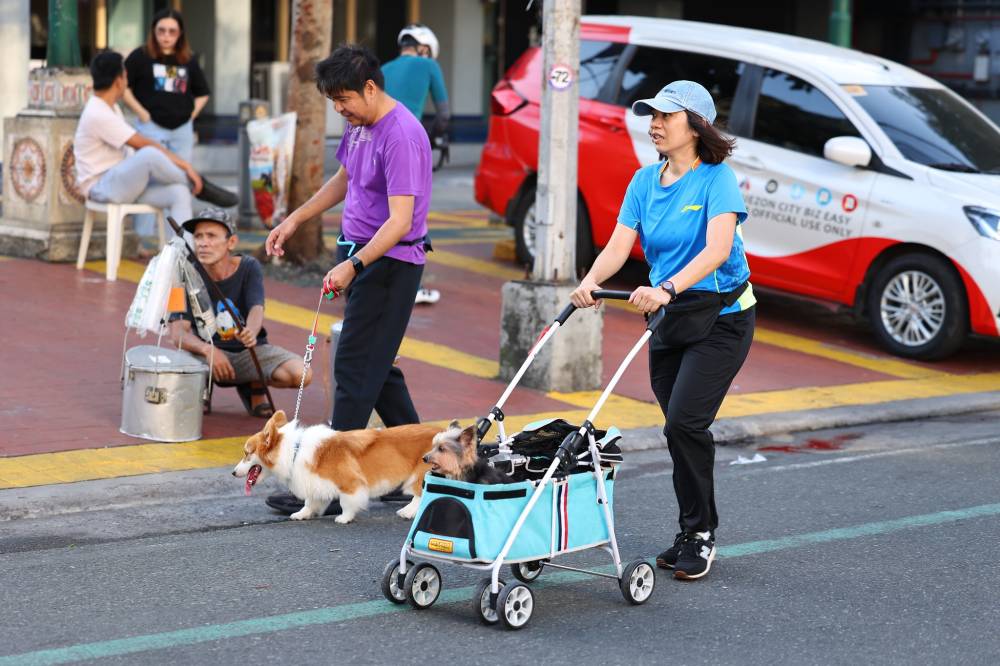
While temporary, such measures can give us a taste of what a people-first approach to urban design is like. They allow us to experience—even just for a few hours—what it feels like to reclaim and utilize precious public space long relinquished to vehicles, and to policies that prioritize the convenience of metal boxes over that of pedestrians and other sustainable modes of transport.
These projects, therefore—more than novelty jaunts for fun and recreation—are actually experiments of sorts, which can give us and the powers that be insights on what works before potentially implementing more efficient, more permanent infrastructure. And who knows? Maybe, just maybe, the time will come when we need not wait for Sunday mornings anymore just so your children can go out and play freely; so we can walk, run, or bike without being honked at.


